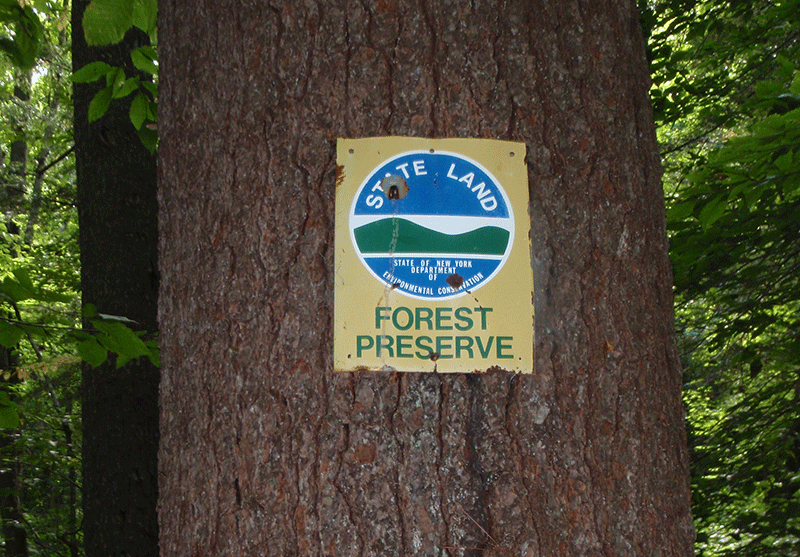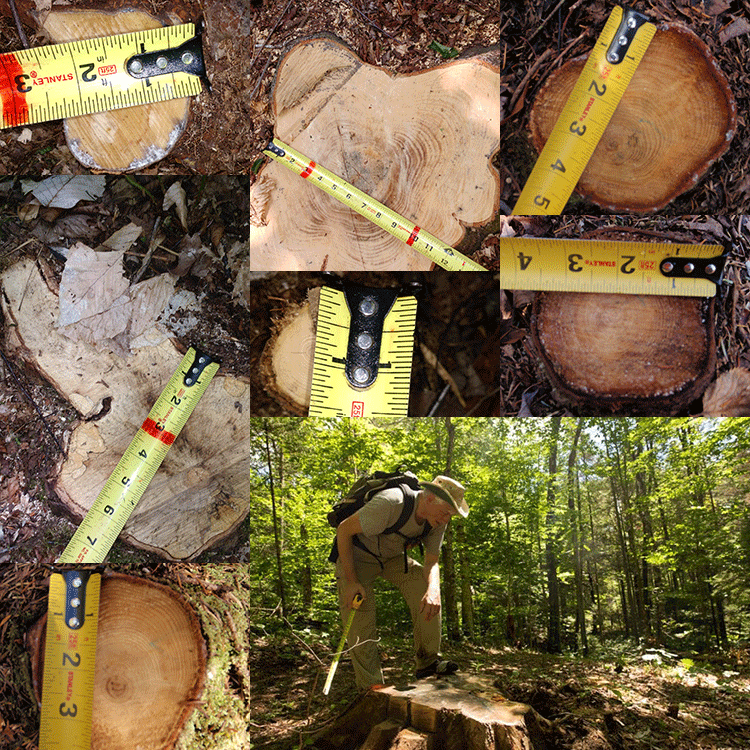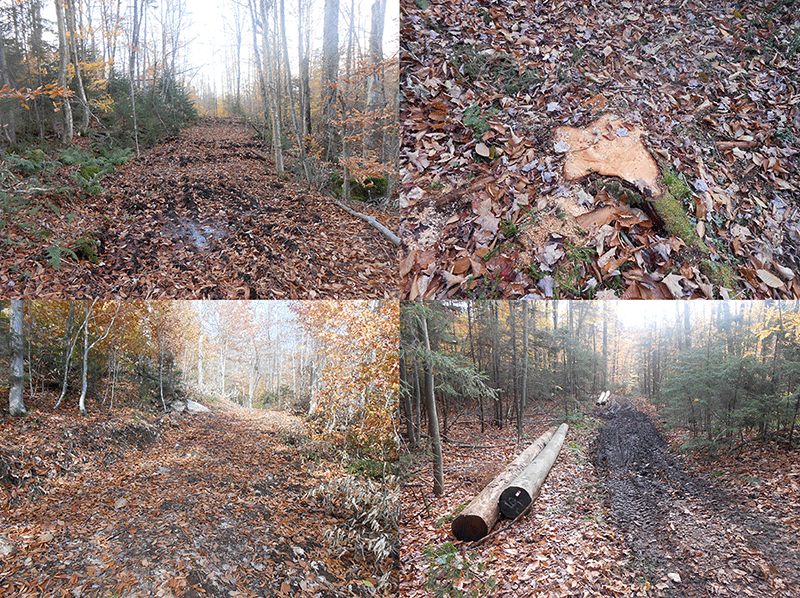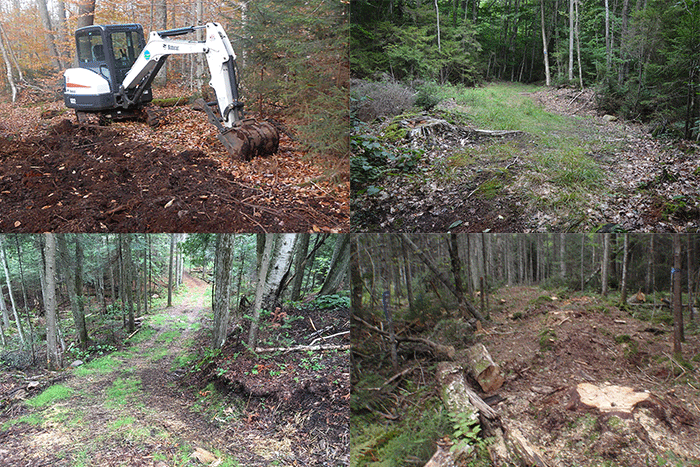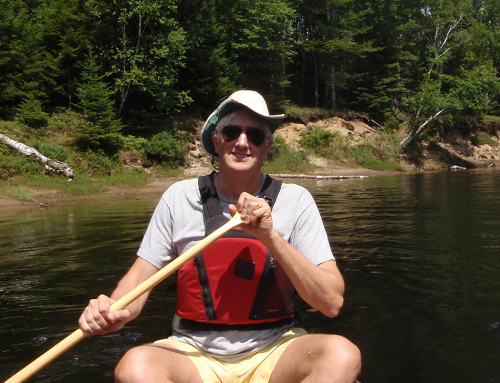Recent pieces in the Adirondack Explorer (see here and here) have attempted to assess the implications of the decision by New York State’s highest court in Protect the Adirondacks v Department of Environmental Conservation and Adirondack Park Agency. The Court of Appeals found that these state agencies violated the state Constitution in their efforts to build a network of new extra-wide snowmobile trails in the Adirondack Forest Preserve. These commenters have derided the decision because they say it’s focused on tree cutting, which they argue is a poor standard to evaluate the constitutionality of management actions by state agencies under Article 14, Section 1, the Forever Wild Clause.
These commenters fundamentally misread the 2021 Court of Appeals decision and don’t seem to grasp its breadth or scale and how it will reform Forest Preserve management in the years ahead. The decision expanded Forest Preserve case law far beyond the tree cutting standards that were established by prior court decisions interpreting Article 14.
It’s hard to miss this expansive look at Article 14 in the recent decision. In its very first paragraph, the Court stated:
The [state’s snowmobile trail] plan requires the cutting and removal of thousands of trees, grading and leveling, and the removal of rocks and other natural components from the Forest Preserve to create snowmobile paths that are nine to 12 feet in width. We conclude that construction of these trails violates the “forever wild”provision of the New York State Constitution (art XIV, § 1) and therefore cannot be accomplished other than by constitutional amendment. (p 2)
Tree cutting was just one of the factors that the Court used to find that the State’s plan to create a network of new wide snowmobile trails was unconstitutional. Because it required such major changes to the Forest Preserve, as enumerated above, it could not be accomplished administratively, and may only be done through a constitutional amendment to Article 14.
Article 14, Section 1 of the New York State Constitution provides, in pertinent part:
The lands of the state, now owned or hereafter acquired, constituting the forest preserve as now fixed by law, shall be forever kept as wild forest lands. They shall not be leased, sold or exchanged, or be taken by any corporation, public or private, nor shall the timber thereon be sold, removed or destroyed.
New York’s courts first took up an Article 14 case, and issued guiding rulings, in 1930 where both the Appellate Division and Court of Appeals issued decisions in the “MacDonald” case. In 1993, the Appellate Division issued a further Article 14 ruling in the “Balsam Lake” (Catskills) case. Now added to these cases are the decisions from the Appellate Division in 2019 and Court of Appeals in 2021 in the Protect the Adirondacks case (the “Protect” decision).
Tree cutting has been used historically as a principal factor in Article 14 caselaw because it’s an objective measure that can be quantified. Trees or stumps can be accurately counted. Thus, the courts can rule on whether “the timber thereon” was “sold, removed or destroyed.” Before Protect, the courts had not focused as much on other parts of the Article 14 clause, such as the requirement that the Forest Preserve “be forever kept as wild forest lands.”
Tree cutting, of both big and small trees, was at the heart of the 1930 and 1993 decisions. For those who complain that tree cutting is not a valid factor by which to evaluate a constitutional violation on the Forest Preserve, their complaint lies with the courts from 1930 and 1993. For over 90 years this has been a staple of Forest Preserve law, but in 2021, the courts augmented tree cutting with other equally important factors and the Court of Appeals issued an expansive decision.
Those who complain about small trees of less than 3” diameter at breast height (DBH) being considered to be “timber” protected by Article 14 have simply not looked at the historic record. In the late nineteenth century, one definition of “timber” in the most commonly used dictionary of the day said that it meant “woods or forest; wooded land,” among other definitions. The word “timber” was used by writers of popular Adirondack travelogues of that time to refer to the whole forest, or vast forested hillsides or mountainsides. These writers wrote about thick impenetrable stands of small timber. Professional forest management manuals and state forestry reports of the day referenced both “big timber” and “small timber.”
More important was the use of “timber” in the 1894 Constitutional Convention debates on what came to be Article 14. The words timber, trees, forest, and wilderness were all used interchangeably. Those who continue to argue that the meaning of the word “timber” in Article 14 refers purely to large merchantable trees ignore history and are making the same mistake as the State agencies made in the Protect case did when they stubbornly argued for just one narrow contemporary meaning of the word “timber”. (And even today, the use of “timber” is varied.) When the State’s argument was factually and persuasively debunked by a prominent historian’s testimony, the State had no credible response, and its arguments fell apart like a house of cards.
Protect the Adirondacks’ case was also bolstered by fieldwork that showed that there were many trees of 1”-3” DBH that were cut down to build the State’s trail system, that were 75 years old, or older. Some of these “small” trees were over 50 feet tall. There are many factors like soils, aspect, slope, shade, and tree type, among others, that affect the growth rate of a tree. Even the State’s expert scientist testified that a tree is a tree even if it’s just 1”-3” DBH.
The findings of the trial court and the Appellate Division in the Protect case that these small trees were indeed “timber” (which were relied upon in the Court of Appeals decision) provided an important clarification by the courts about the meaning of “timber” in Article 14. The Protect case clarified that all trees on the Forest Preserve, both large and small, are protected under Article 14, and will help to improve state Forest Preserve management in the years ahead.
Yet for those who are disturbed about using tree cutting, whether big trees or small trees, to make the constitutional analysis, there’s lots of good news in the Protect decision. For those who want broader criteria beyond tree cutting for evaluating whether a specific activity is constitutional on the Forest Preserve, now is the time to rejoice rather than gripe. The recent Protect decision goes well beyond tree cutting. Its most interesting and far-reaching aspects introduced new criteria for Forest Preserve managers and future courts to apply.
In 1930 and 1993, the courts’ Article 14 decisions focused on tree cutting. The MacDonald decision introduced a test that trees must be protected on the Forest Preserve and that any cutting for State management of the land must not be “material” or “substantial.” In MacDonald, the state’s two highest courts found that the State’s plans to cut 2,500 “large and small” trees on 4.5 acres of Forest Preserve to build a bobsled track violated Article 14.
In 1993, in the Balsam Lake decision, the Appellate Division found that the State’s plans to cut 350 big and small trees (the State counted trees down to 1” DBH in its court documents) to extend a cross-country ski trail by 2.3-miles did not violate Article 14. These two cases served as constitutional bookends for Forest Preserve law, one making a finding about an impermissible action, the other making a finding about a permissible one. The line of what is impermissible “material” or “substantial” tree cutting lies somewhere between the two.
The MacDonald decision also added that certain types of facilities on the Forest Preserve were impermissible, such as the bobsled track, or things like a golf course. In discussing what uses may be permitted, the Court referenced Robert Marshall’s 1930 article in the Scientific Monthly, The Problem of the Wilderness, in which Marshall argued that only trails and temporary shelters should be permitted in wilderness areas, and motors should not be permitted.
Protect the Adirondacks went to court because we believed that the State’s plans to build a network of hundreds of miles of new wide snowmobile trails would result in tree cutting (destroyed trees) on the Forest Preserve that violated the MacDonald tests of “material” and “substantial” cutting. We also believed that the terrain alterations needed to build these trails violated the requirement in Article 14 that the Forest Preserve be “forever kept as wild forest lands.”
In the Protect case the State Supreme Court and Appellate Division, Third Department, both bifurcated Article 14 into two parts and both ruled that the State did not violate the requirement that the Forest Preserve “be forever kept as wild forest lands.” The Appellate Division, however, overruled the Supreme Court in a 4-1 decision, and ruled that by cutting tens of thousands of trees, both large and small, the State had violated the prohibition in Article 14 on the destruction of timber.
In the Protect decision, the Court of Appeals stated that Article 14 should not be bifurcated, holding “that the constitutional protection is unitary”. (p. 9) By doing this the Court emphasized new, broader criteria for evaluating constitutional compliance. Tree cutting, the Court of Appeals stated in 2021, was one important factor, and it affirmed that the MacDonald tests of “material” and “substantial” levels of cutting still applied, but it also said that tree cutting was just one of several factors that need to be evaluated.
The court wrote that the impact of state management on the “wild state” of the Forest Preserve must be evaluated. Additionally, the court articulated new tests for terrain alterations, and for managing the Forest Preserve “as wilderness.”
Click here to see what Class II Community Connector Snowmobile Trails looked like.
Wild State: The Protect decision articulated a new “wild forest” management directive for State managers. Quoting from the 1930 MacDonald decision, the Court stated:
defendants and the dissent contend that the project’s impacts are justified because it enhances access to the Preserve and provides a variety of recreational opportunities. That analysis proceeds from a fundamental misunderstanding. The constitution provides for access and enjoyment of the Forest Preserve as a wild forest: “very considerable use may be made by campers and others without in any way interfering with this purpose of preserving them as wild forest lands.” (p. 11)
The Class II trails were found to be unconstitutional because they “require greater interference with the natural development of the Forest Preserve than is necessary to accommodate hikers.” (p. 10) To comply with this directive from the Protect decision, State managers now need to consider the impacts on the “wild forest” state of the Forest Preserve of their planned management actions. And, contrary to what some Chicken Littles may claim, nothing in the Protect decision says that building, maintaining or improving hiking trails is problematic, as it actually supports such efforts.
Terrain Alteration/Trail Width: The Protect decision also established a new standard for trail width, which was an important factor that led the Court of Appeals to find Class II trails to be unconstitutional. The Class II trails were at least 9 to 12 feet wide with a flat tread area, and wider in many places where extensive bench cuts were made on both sides of the trail. The Court stated “The trails may not be built like roads for automobiles or trucks, but neither are they constructed as typical hiking trails.” (p. 10)
Additionally, the Protect decision described other factors that contributed to the unconstitutionality of the Class II trails, such as “bench cuts—cuts into sloped ground and removal of the cut soil, rock and trees to create a ‘bench’ upon which atrail can be placed—require clearing the land on the up- and down-slopes of the trail, resulting in the clearing of the forest floor up to 20 feet in width in certain areas—a span wide enough to site a two-car garage.” (pp. 10-11) The Court found such cuts to violate the mandate that the land be “forever kept as wild forest lands.” The court also referenced “grading and leveling” and the “removal of rocks and other components” as factors that put the trails in violation of Article 14. Henceforth, changes to the terrain must be carefully considered by the DEC and APA when planning Forest Preserve management actions.
The Ultimate Objective of Wilderness: Another standard from the Protect decision is based on the statement that the State’s Forest Preserve management must highlight the “ultimate objective of protecting the forest as wilderness.” (p. 9) In essence, the Protect decision highlighted the critical importance in Article 14 that the Forest Preserve must be “forever kept as wild forest lands.” This factor is yet another important test for state managers.
Clearly, the Protect decision goes far beyond merely limiting tree cutting. At Protect the Adirondacks we think that the criteria for upholding the “wild state” of the Forest Preserve, limiting alterations to the terrain of the Forest Preserve, and putting Forever Wild at the heart of Forest Preserve management will have a far greater impact in the years ahead than looking at tree cutting alone.
The Forest Preserve is protected in the State Constitution for a reason, and that’s to give the People of the State of New York the right and the responsibility for making the big decisions about its use. Big decisions should only be made by a constitutional amendment voted on by the People and not made by the Governor, the Legislature, or state agencies. The courts have reaffirmed the right of the People to decide about major changes to the Forest Preserve and have reined in State agencies when they attempted to make major changes on their own. Forest Preserve law has been shaped over the last 92 years, and the most recent decision provides important new guidance for state managers and the public.

